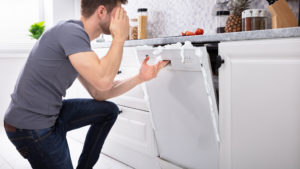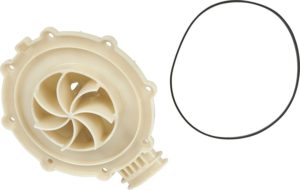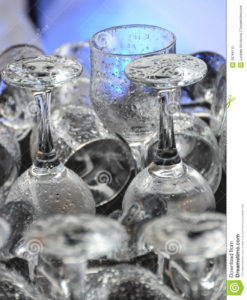Remove Excess Suds from Dishwasher
**NOTICE**
Due the danger and complexity of electronic equipment repair, the following technical tip is intended for professional reference only. Please refer to manufacturer’s recommendations as Encompass does not guarantee the accuracy, reliability or safety of this information.

Ever experience suds in a dishwasher blowing bubbles out the bottom and flooding the kitchen? Here’s what to do if it ever happens again:
Excess suds are typically caused by introducing soap that is not intended for dishwashers. The most common soap that should not go in a dishwasher is standard liquid soap used for handwashing dishes. This type of soap is meant to create lots of suds, while dishwashing detergent is not.
So how do you get rid of the suds flowing out of the dishwasher and save your kitchen floor? It’s as easy as introducing a little bit of vegetable oil. Stop or pause the dishwasher’s current cycle and pour about one-quarter cup to one-half cup into the bottom of the unit. Close the door and let it continue to run again for just a few more minutes. Then, open the door again and select the “cancel drain” cycle. After the unit has drained completely, open the door again and rerun the normal wash cycle.
Allow the unit to run for about five minutes or so. And then again, open the door, select the cancel drain button and let the unit drain out. Afterward, open the door and inspect the bottom for suds. If suds still exist, go ahead and start a normal wash cycle. And just repeat that process until the suds are gone. If there are no more suds, then it’s back to normal.
Special thanks to Fred’s Appliance Academy for this helpful tip.



 particles away. Here’s how to fix a Whirlpool dishwasher in just a few minutes with replacement part
particles away. Here’s how to fix a Whirlpool dishwasher in just a few minutes with replacement part  There are a few possible causes of buzzing noises, including dishes not stacked properly, machine not sitting level on the ground, pump intake is defective or pump seals are dry. Sometimes, it’s simply a case of general wear and tear, especially if the unit is old. Here are some things to try to stop the sounds:
There are a few possible causes of buzzing noises, including dishes not stacked properly, machine not sitting level on the ground, pump intake is defective or pump seals are dry. Sometimes, it’s simply a case of general wear and tear, especially if the unit is old. Here are some things to try to stop the sounds:
 However, if you’ve never used rinse aid and previously dried dishes are coming out wet, you’ll need to investigate other potential reasons.
However, if you’ve never used rinse aid and previously dried dishes are coming out wet, you’ll need to investigate other potential reasons.